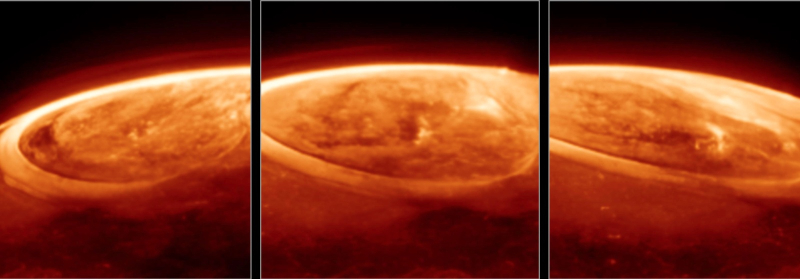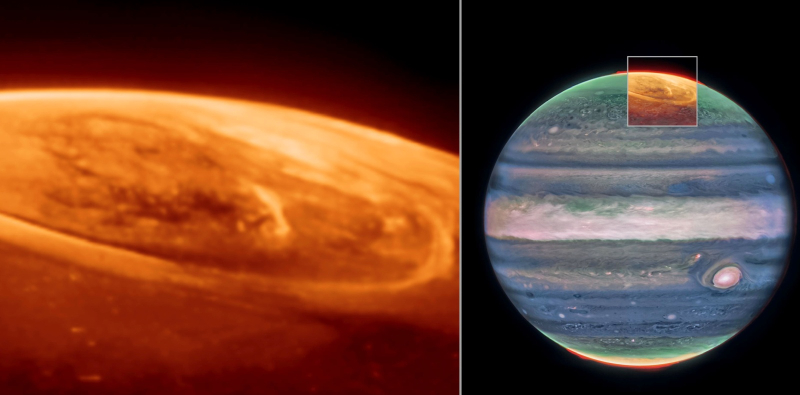James Webb Shows Aurora on Jupiter
Today, the official website of STScI (Space Telescope Science Institute) published images of the aurora borealis on Jupiter, taken by the James Webb Space Telescope (JWST).
Auroras occur when high-energy particles enter a planet’s atmosphere near its magnetic poles and collide with gas atoms. Not only are Jupiter’s auroras enormous in size, they are also hundreds of times more energetic than those on Earth.
In addition to the solar wind, Jupiter’s auroras are fueled by the gas giant’s strong magnetic field, which captures charged particles from its vicinity. Both those contained in the solar wind and particles ejected into space by volcanoes on the moon Io.

“We wanted to see how the auroras [of Jupiter] changed, expecting them to slowly appear and disappear, perhaps over a quarter of an hour or so,” said astronomer Jonathan Nichols of the University of Leicester. “Instead, we saw the entire auroral region fizz and explode with light, sometimes changing for a second.”




